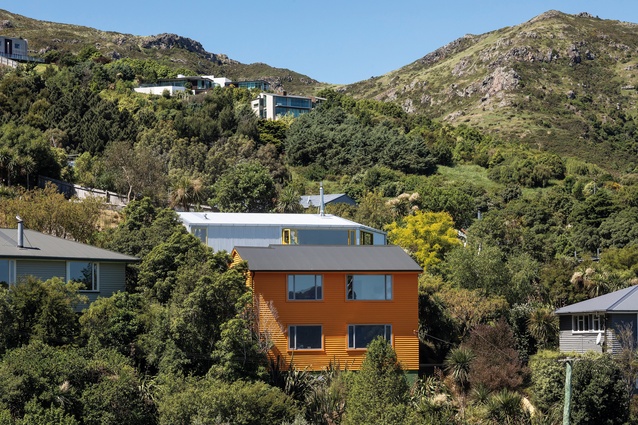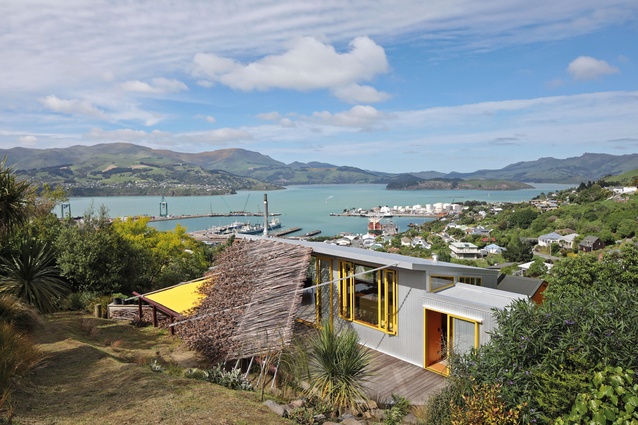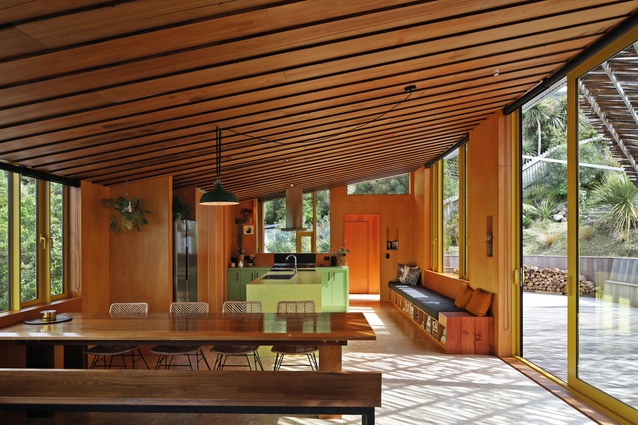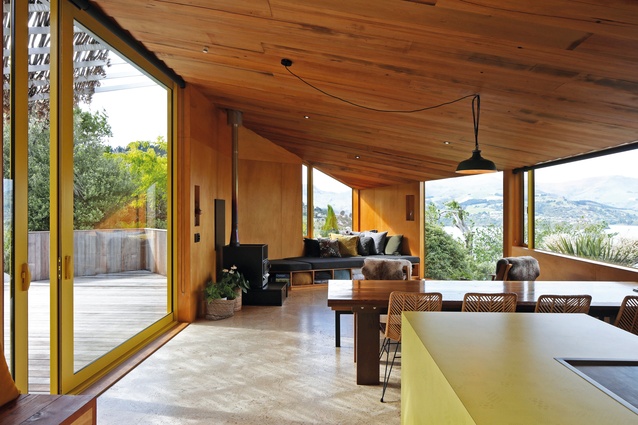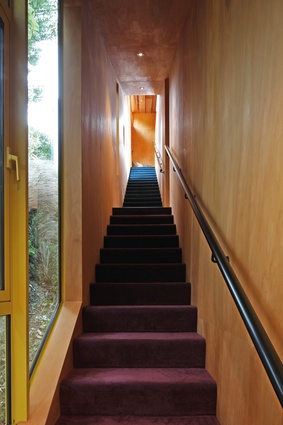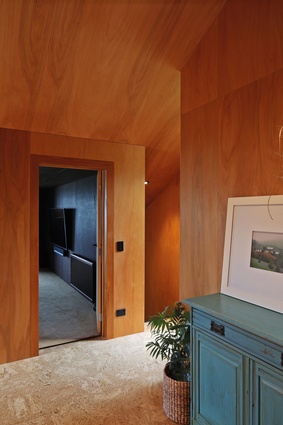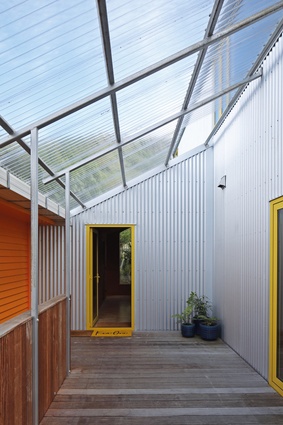A place of whakapapa
In Toto Whare, Bull O’Sullivan Architecture has created a home where generations come together to connect and bond. Jeremy Smith is captivated by its energy and generosity of spirit.
Lyttelton is full of character and characters. It is the kind of place where a dining table carries the stories, welcoming and mirth of all the comings and goings. There is whānau, of course, but also room for more, be they neighbours, visitors or a friend arriving fresh from digger-driving to borrow an iron. In fact, we saw a second man out walking an iron as we traversed Lyttelton’s network of sometimes zigzagging, sometimes straight-up little streets. There is quirk happening; it comes with the artists, the port, the grit and the creases. And it is here, amongst community, that architect Michael O’Sullivan and the team at Bull O’Sullivan Architecture have added another beautifully ‘at-home’ home.
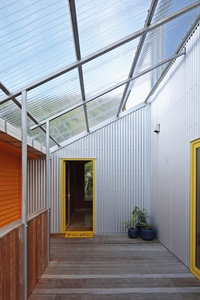
I say added rather than ‘reworked’, as could describe an alteration, or ‘built’, as might describe a new house, for this is both of those and more. This is a place of whakapapa, a home for past, present and future generations and one which proudly draws in context and a greater world. Adding is a generative process rather than one of beginnings, and this, of course, suits both whānau and Lyttelton.
Lyttelton is, wonderfully, still village sized and a place where you know your neighbours. The steep terrain presumably has a hand in this and life here differs from that in the expanse of Christchurch, through the tunnel. Distinctions between village and city led to the French coining the term cité to capture the specific character of life in a neighbourhood. The meaning of the term may have shifted a little since its 16th-century definition, as Richard Sennett suggests,1 but understanding interconnectedness when adding to a village certainly requires the knowledge of character.
We should all know O’Sullivan’s own home and office here in Lyttelton, which beautifully intermingles house with work, building and distance, and faces the elements through strength of architecture and architect. The building won the NZIA Sir Ian Athfield Award for Housing in 2015 and here we are, five years later, with Toto Whare having just won the same coveted award. This work brings equal generosity and comes with a table and an invitation worth describing.
So, up these crazy streets and into a fold in the landscape that circles south to the harbour. Climb some concrete steps, under an eave and arrive at a polycarbonate-covered enclave between bright-yellow-trimmed metal and orange weatherboards. Kia ora. There is a flow of spaces opening left and right but, first, we meet some pictures of whānau and memories resting on timber linings.
A few short steps towards the light and we follow a narrow stair with coloured carpet up the hillside to the living space. It’s an arrival which provides oblique views of the harbour, yellow joinery, doors to a deck and garden, a kitchen and a table. Here we sit, eat and talk about everything – where to play tennis, people, ironing – everything but the house and what makes this all sing. And there is the success. There are some cool beats playing but there is more than music in the air. This “whare and its whānau are inseparable”,2 as the NZIA Jury reminds us and so, too, is the cité outside. Like a wharenui, everything just meets. It is energising.
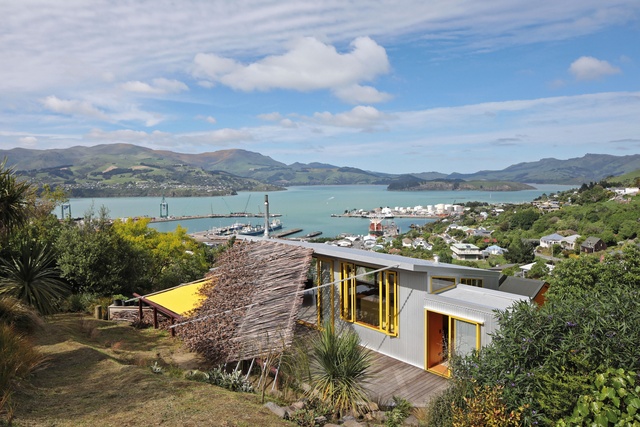
This upper addition has quite a long living space, falling and tapering to the east and welcoming the view as part of life rather than simply framing something to look at. The deck, garden and shade covering of fine angling steel, kōrari and yellow shade cloth act with the sun to the north. “That’s the thing about having things to play with,” we agree, “you keep on playing with them.”
Architecture can invite fun and there is talk of further shade-tuning over the summer. As if on cue, the sun comes out, the external shade looks inviting, and the window above the southern entry is opened, letting cool air flow in, up and out of the house. A simple strategy that cools like my yellow tangy drink. There is that word again: yellow. Now to the orange.
Eventually, we go and meet the rest of the house; from the table, we see just enough of its roof to know that it’s there. It is a two-storey state house that, before becoming orange, was severely racked in the quake. Its re-squaring and colourful re-cladding saw the old rimu weatherboards, which were, of course, yellow, being stripped and used vertically to line the interior with warmth and history.
But there is more architecture at play than weatherboarding, for the state house plan, which presumably came with colonial hallways and segregated little rooms, now flows from one space to the next and has become communal. There are work and play spaces to transition before finding bedrooms, with intermediary spaces placing couches, retreat and a vinyl collection before the privacy. You can imagine the discussions: “How many, if any” individual rooms might we really need. Houses, like communities, grow when they share resources.
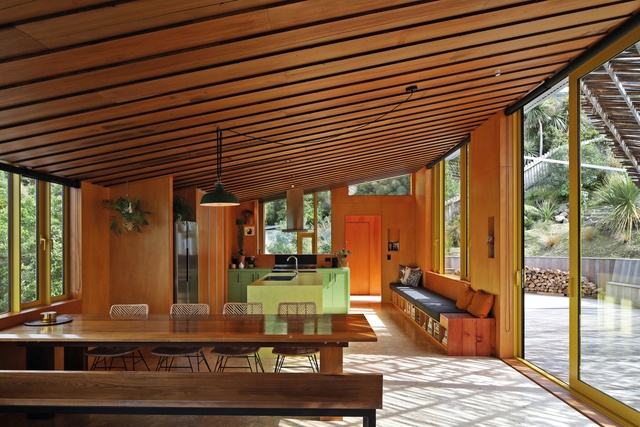
There is no signposting to make all this happen. It works through feeling right, being inviting and understanding the role of buildings within communities. It is a rare strength to have a practice interested in people rather than preconceived definitions of budget or scale. Whether sized for hundreds, like the Lesieli Tonga Auditorium in South Auckland, or for a whānau in Lyttelton, working for need helps foster that wonderful architectural trait of generosity which comes with being neighbourly.
It is hard not to mention Ireland when talking to O’Sullivan about Lyttelton, for the craggy slopes and township remind him of his father and Ireland, and it was this that brought him south. The Irish architectural critic Shane O’Toole points to the effort required to maintain communities as they grow when describing Dublin in 2005 “changing at a rate not seen for almost 300 years. As to the city as village. As recently as 1960 its 600,000 inhabitants often affectionately referred to the city as village.”3 It is a similar discussion to the one had by the French a few centuries earlier but it might equally be had at smaller scales, even for individual houses. It is hard to keep on adding and maintain the rhythms and sense of place without ironing out the creases.
Lyttelton, like most of Aotearoa, is being added to as we find we need more places for us all to live. Bull O’Sullivan Architecture and the whānau at Toto Whare provide a valuable lesson here and it is yellow and orange, so not to be missed. You can add and contribute to community by inviting character to be character and characters to be characters. We are all the better for it. Ka pai.
1Richard Sennett, Building and Dwelling: Ethics for the City, London, Penguin Books, 2019, pp. 1–2.
2 NZIA Jury citation, architecturenow.co.nz, 4 November 2020.
3 Shane O’Toole, ‘Let’s Face the Music and Dance’, in One Hundred & One Hosannas for Architecture: A Chronicle of Architectural Culture in Millennial Ireland, Dublin, Gandon Editions, 2017, p. 61.

